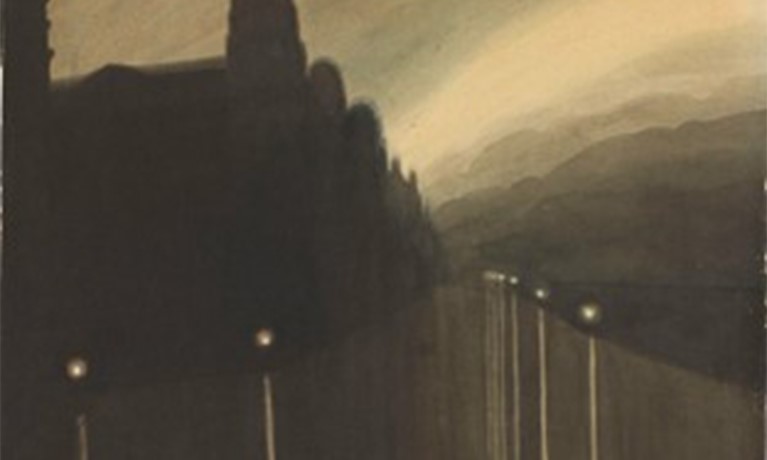
Veiled Cities – Haunted Urban Realities in the Nineteenth and Twentieth Centuries
Funders
CAMC, Coventry University
University of Oxford, John Fell Fund
Collaborators
Professor Juliet Simpson (Coventry University) – principal partner
Professor David Hopkin (University of Oxford) – principal partner
Professor Petra James (Université Libre de Bruxelles) – partner
Project overview
Led by Prof Juliet Simpson (CAMC), and Prof David Hopkin (University of Oxford), the project on ‘Veiled Cities – Haunted Urban Realities’ is addressed to art, cultural and memory historians of urban spaces between the nineteenth and twentieth centuries – as well as of the art, literature, music that solemnized the city. Our central objective is to develop new understanding of enclosed, secret and haunted cities, as opposed to cities of light and movement. It arises from critical linkages between the organizers’ existing research projects (Simpson: Gothic Modern; Hopkin: Urbanisms and material cultures), but extends these interests in new directions.
Project objectives
The project has three key objectives. First, is to ask how and in what ways the city has an autonomous existence, its own character, not subsumed into other identities of nation and class. Thus, a core concern is to explore how this character is expressed through the city’s own traditions and its interlinked spaces and identities, to discover its hidden narratives, legends, its folklore – bell-towers, processions, rituals and their imaginaries in architecture, art, print and images.
Second, is to challenge dominant historical approaches to nineteenth- and twentieth-century urban spaces that have privileged their construction from materialist perspectives as loci of capitalist ‘progress’ and alienation. The core contention is to question such narratives through this project’s proposition that all that is solid does not melt into air. Rather, the aim is to illuminate how and what ways the city is material, tangible, and the past is made immanent in its stones, in its relics. Key, therefore, is to bring to visibility, neglected identities of the city as richly layered, containing many portals to other worlds – the past, the divine, the uncanny. In short, our ambition is to develop new knowledge of the city as a place of ghostly and miraculous encounters.
Third, is to question assumptions that the urban is a world of ‘anonymity’ predicated on social/community fragmentation; on anomie. While lives may be hidden, in rooms and courtyards or glimpsed fleetingly through doorways and windows, this project challenges conceptions that such lives may be seen as empty or dislocated. Here, core consideration will be given to understanding the city – and its hidden communities, actors and sites – as a patchwork of secrets, mysteries and possibilities. Via this third area of concern, the main objective is to stimulate new knowledge and approaches to the interior as a decorated space, made through art and the applied arts. Further, is to shed light on how, and in what new contexts, the arts and crafts that inspired philanthropists of the later nineteenth century were making work for the urban poor, yet simultaneously creating an aesthetics of reclusion. In these ways, this projects seeks to open broader understanding about how the interior creates the possibility of personal space, of an inward reality, yet may also be re-imagined as a porous space of self, gender and artistic re-invention – in particular, of female communities, actors and of alternative utopian projections.
Outputs
International Workshop (October 2022)
International two-day Conference (September 2024)
Co-edited, multi-author book: 2025-26.




